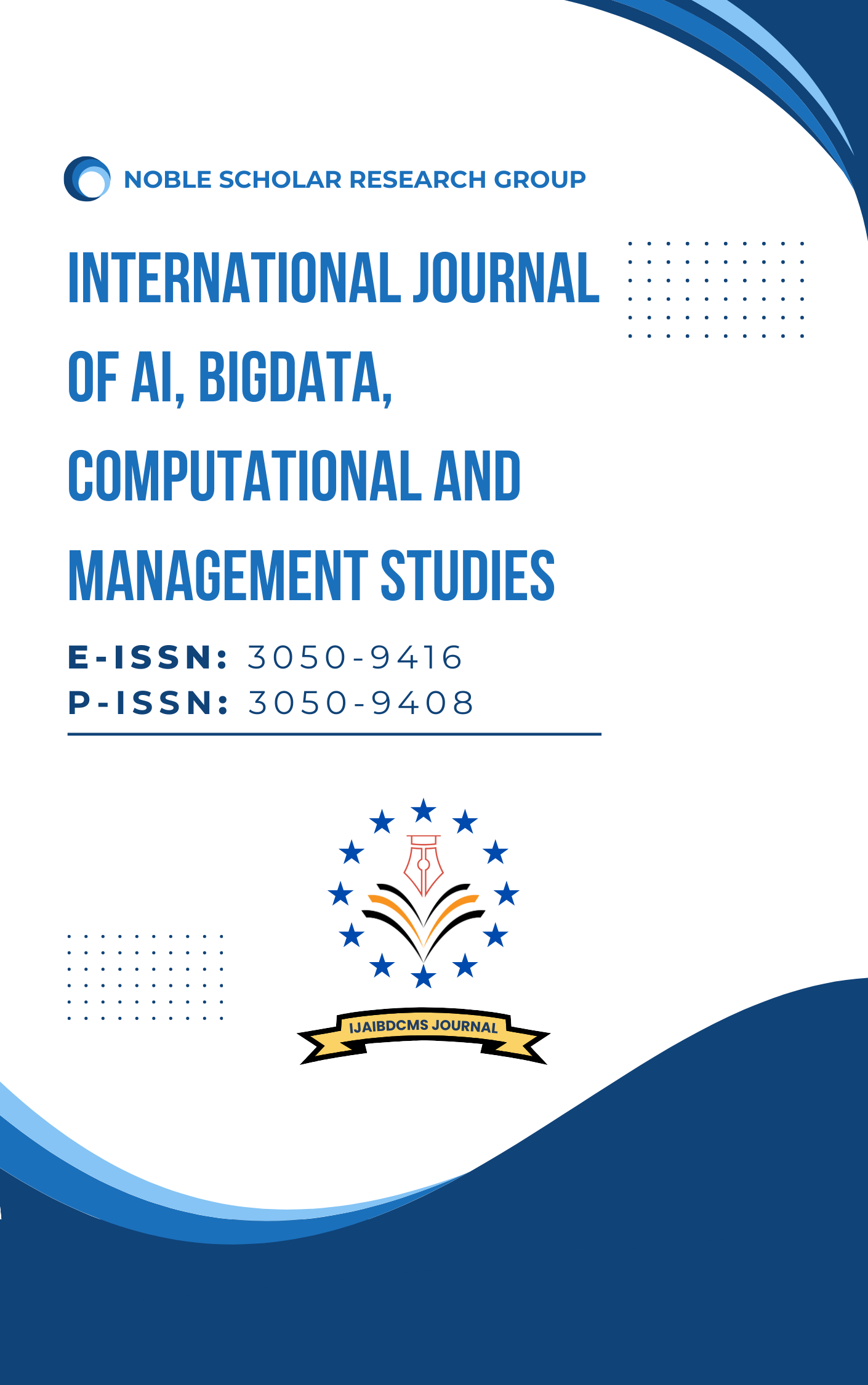AI-Driven Personalized Healthcare Plans Using Genomic and Clinical Data in the Cloud
DOI:
https://doi.org/10.63282/3050-9416.IJAIBDCMS-V1I1P104Keywords:
Artificial Intelligence, Personalized Healthcare, Genomics, Clinical Data, Cloud Computing, Machine Learning, Predictive AnalyticsAbstract
The convergence of Artificial Intelligence (AI), cloud computing, and genomics is redefining contemporary healthcare. The emergent abundance in genomic and clinical data has opened a chance to develop individualized healthcare regimens based on a patient and his/her genetic constitution as well as his/her health background. This paper shows a widely applicable model of an AI-based individualized healthcare system and proposes a solution based on cloud-computing infrastructure where both the genomic and clinical data can be combined. It analyzes the importance of AI in interpreting large and complicated biomedical data and how it is used in predictive modeling, personalization of treatments and also in risk prediction. Reactive to proactive healthcare is made possible by using machine learning algorithms to decipher the genomes and understand clinical records. Some of the main issues, such as data privacy, model explainability, and computational needs, are addressed in the framework of cloud computing, which is characterised by scalable storage services, real-time processing, and universal accessibility. The present article outlines the research advances gathered before 2020 that created a robust foundation of the existing advancements and suggests a coherent approach to healthcare personalization on the basis of neural networks, clustering techniques, and supervised learning procedures. It also discusses experimental outcomes achieved through simulation using a real dataset. Lastly, in the paper, the direction of future personalized medicine was described as well as the ethical consequences of AI-assisted diagnosis and treatment
References
1. Evans, W. E., & McLeod, H. L. (2003). Pharmacogenomics—drug disposition, drug targets, and side effects. New England Journal of Medicine, 348(6), 538-549.
2. Collins, F. S., Morgan, M., & Patrinos, A. (2003). The Human Genome Project: lessons from large-scale biology. Science, 300(5617), 286-290.
3. Tarca, A. L., Carey, V. J., Chen, X. W., Romero, R., & Drăghici, S. (2007). Machine learning and its applications to biology. PLoS computational biology, 3(6), e116.
4. Litjens, G., Kooi, T., Bejnordi, B. E., Setio, A. A. A., Ciompi, F., Ghafoorian, M., ... & Sánchez, C. I. (2017). A survey on deep learning in medical image analysis. Medical image analysis, 42, 60-88.
5. Grossman, R. L., Heath, A. P., Ferretti, V., Varmus, H. E., Lowy, D. R., Kibbe, W. A., & Staudt, L. M. (2016). Toward a shared vision for cancer genomic data. New England Journal of Medicine, 375(12), 1109-1112.
6. Snyder, M. (2016). Genomics and personalized medicine: what everyone needs to know®. Oxford University Press.
7. Manolio, T. A., Chisholm, R. L., Ozenberger, B., Roden, D. M., Williams, M. S., Wilson, R., & Ginsburg, G. S. (2013). Implementing genomic medicine in the clinic: the future is here. Genetics in Medicine, 15(4), 258-267.
8. Jensen, P. B., Jensen, L. J., & Brunak, S. (2012). Mining Electronic Health Records: Towards Better Research Applications and Clinical Care. Nature Reviews Genetics, 13(6), 395-405.
9. Esteva, A., Kuprel, B., Novoa, R. A., Ko, J., Swetter, S. M., Blau, H. M., & Thrun, S. (2017). Dermatologist-level classification of skin cancer with deep neural networks. Nature, 542(7639), 115-118.
10. Chen, R., Mias, G. I., Li-Pook-Than, J., Jiang, L., Lam, H. Y., Chen, R. & Snyder, M. (2012). Personal omics profiling reveals dynamic molecular and medical phenotypes. Cell, 148(6), 1293-1307.
11. Marx, V. (2013). The big challenges of big data. Nature, 498(7453), 255-260.
12. Toga, A. W., & Dinov, I. D. (2015). Sharing big biomedical data. Journal of Big Data, 2, 1-12.
13. Dilsizian, S. E., & Siegel, E. L. (2014). Artificial intelligence in medicine and cardiac imaging: harnessing big data and advanced computing to provide personalized medical diagnosis and treatment. Current cardiology reports, 16, 1-8.
14. Raghupathi, W., & Raghupathi, V. (2014). Big data analytics in healthcare: promise and potential. Health Information Science and Systems, 2, 1-10.
15. Shabani, M., & Marelli, L. (2019). Re‐identifiability of genomic data and the GDPR: Assessing the re‐identifiability of genomic data in light of the EU General Data Protection Regulation. EMBO reports, 20(6), e48316.
16. Krishnamoorthy, P., Gupta, D., Chatterjee, S., Huston, J., & Ryan, J. J. (2014). A review of the role of electronic health records in genomic research. Journal of cardiovascular translational research, 7, 692-700.
17. Al Kawam, A., Sen, A., Datta, A., & Dickey, N. (2017). Understanding the bioinformatics challenges of integrating genomics into healthcare. IEEE journal of biomedical and health informatics, 22(5), 1672-1683.
18. Rialle, V. (1995). Cognition and decision in biomedical artificial intelligence: From symbolic representation to emergence. AI & Society, 9(2), 138-160.
19. Abrahams, E., & Silver, M. (2010). The history of personalized medicine. Integrative neuroscience and personalized medicine, 3-16.
20. Gonzalez-Angulo, A. M., Hennessy, B. T., & Mills, G. B. (2010). Future of personalized medicine in oncology: a systems biology approach. Journal of Clinical Oncology, 28(16), 2777-2783.



